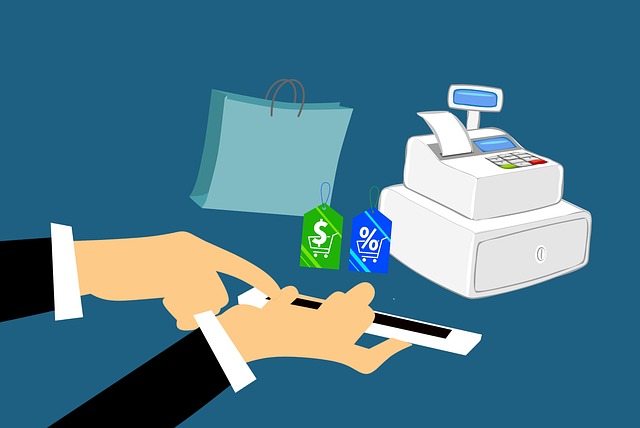Mobile Payments Surge: Driven by Greater Speed and Stronger Security
Smartphone dependency and our growing reliance on them for daily tasks is often cited as a health concern – with the term ‘nomophobia’ now in existence as a recognized psychological condition that describes anxiety at being separated from one’s phone. Another new term is ‘phone/life balance’, with apps being developed to encourage digital wellbeing.
However, the flipside to this is that there are undeniable benefits of having Smartphones central to many everyday tasks. Principal among these is making mobile payments, especially in point-of-sale transactions – in North America alone, nearly 50% of retailers are already conducting transactions via mobile payments, or digital wallets such as iWallet, with 32% set to make the shift in the next two years.
With latest forecasts pointing towards the global mobile payments market hitting a staggering $3,300 billion by 2023, it’s certainly an irresistible option for businesses everywhere. As a technology that cuts across virtually all areas of industry including education, retail, the financial sector, and healthcare, it’s small wonder that giants such as Apple Pay and Google Pay were quick to establish the market in the early 2010s. Having led the way since then, many other players are now entering the field.
The iWallet app is one such service that not only offers this particular method of mobile payment processing, but uses the service to provide even more benefits beyond the rather more obvious ones such as convenience and security. One of these includes valuable cost savings for small businesses.
“Because credit and debit card payments incur various processing costs, they are not the most cost-effective proposition for small businesses,” said a spokesperson for iWallet. “The knock-on effect is that many businesses resort to using cash, which has numerous security issues and can also cost them money in terms of disinterested customers turning away – not many people carry cash on their person these days.
“So what is iWallet? It’s an app offers the best of both worlds. It is safe and secure – using an encrypted intermediary system that is already used by many personal finance apps – so private banking details are not viewable by anyone, including iWallet. But it is also cost-effective – iWallet offers free mobile payment processing up to annual transactions of $10 million, with a small transaction fee of 0.3% for payments over that.”
In 2014, US customers who had reported using their mobile phone to make a payment said they had used various methods to do this, including the well-known Google Pay and Apple Pay apps, but the most popular method (28.6% of users) was scanning a barcode or QR code to make a payment.
First designed in 1994, QR codes have been described as a link between the online and offline worlds and, while some believe them to be slightly antiquated in North America and Europe, they are clearly still a highly popular way of making mobile payments – and usage is widespread in China, Japan, and other south-east Asian countries, places that are often thought of as technological hotbeds.
It is when they are used in conjunction with a mobile wallet, however, that the full capability of mobile payment processing via QR codes becomes clear. The advantages are not just speed and convenience – there are considerable security benefits too, including an intricate network of encryption and time-limited tokens that are unique to the specific transaction. Much safer than carrying loose change and wads of notes around in your pocket.
The iWallet app uses this combination to deliver its payment service, as paying via a QR code offers benefits for both consumer and business. A QR code can be generated through numerous online services and can be displayed in a straightforward manner by the business – printing it on a piece of paper is sufficient. For consumers, QR codes override any concerns over the capability of individual mobile devices – while alternative mobile payment services require the use of NFC (near field communication), scanning a QR code merely needs a phone camera. While Smartphone cameras are standard these days, NFC capability is not.
However, the NFC method of payment is still a popular one, despite some speculation that it will eventually lose out to QR codes because NFC technology is not available in emerging markets. NFC technology works by allowing a phone and card machine to ‘communicate’ via close-proximity radio frequency identification, with the phone having to be held a few inches away from the machine. And as with many mobile payment approaches, it allows an immediate transfer of data – making it considerably faster than ‘chip and PIN’ card payment processes.
Other forms of mobile payments are transactions based on soundwaves – where soundwaves containing encrypted payment data are passed between terminal and phone, without the use of the internet – and magnetic secure transmission payments – which replicates the contactless card process by allowing a phone to emit a magnetic signal that is picked up by the card machine. The soundwave method of payment is particularly appealing to emerging countries and markets that rely on cheaper, more basic technology.
The move towards cashless societies around the globe is gathering pace, with mobile phones rather than debit and credit cards driving the change. New technology, allowing faster payments with greater security, is key to winning more adopters among customers and businesses alike.


…. And further this iWallet service requires the consumer to link their checking account which does not have the regulatory protections that come with debit and credit cards. With the exception of bill payment type use cases consumers have declined consistently to be comfortable doing that.
QR code based payments are much less secure than NFC based payments.